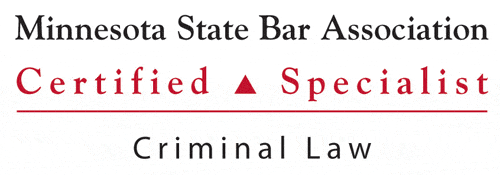Sex offenses are crimes that society tends to judge far more harshly than others. As far as many people are concerned, sex offenders deserve to be locked up and not thought of again. That’s not how the criminal justice system in the United States, or Minnesota, works though.
Inmates, no matter their crimes, have rights, and if they don’t feel those rights are being upheld, then they deserve to call attention to it.
That’s exactly what happened in Minnesota’s Sex Offender Program out of Moose Lake. Inmates there have gone on a hunger strike to protest the conditions in the facility as well as their confinement in the facility.
While the situation at Moose Lake is still being assessed, it is understood that prisoners have rights. As one of many consequences of being classified as a sexual offender, simply being sentenced to participate in the prison-based sex offender program may not be a violation of those rights.
However, we do believe there should be a reasonable path to program completion and ultimate release from the treatment facility. Learn more about Minnesota’s sex offender program and sex offender registry here.
Minnesota’s Sex Offender Treatment Program
Minnesota offers a prison-based program for sex offenders. Its goals are to offer treatment and services to sex offenders while in prison.
Eligibility Requirements
In order to be eligible for the program, the prisoner must be serving at least 20 months. The program also takes mostly offenders that are in the high-risk or moderate-risk category due to the demand for the program.
Low-risk offenders who can’t have treatment while in prison will be referred for treatment in the community once they are released.
Program Basics
Once they are taken into the program, which is not voluntary, then they are housed in specific wings of a larger prison unit. There are structure and rules to the unit but it is not a closed unit. Those in the program will still have interaction with the general prison population. There are generally three stages to program participation:
- For eligible offenders, the first 30 days are an assessment phase that includes testing and an evaluation of treatment needs.
- After that, they participate in group therapy and individual therapy, as well as chemical dependency treatment if they need it.
- Finally, they are prepared for release into the community by educational sessions with family or their support system to help them transition out of prison and reduce their risk for re-offense.
Registering as a Minnesota Sex Offender Upon Release
When a sex offender is released from prison, whether they participated in the program or not, they may be required to register as a sex offender. Commonly, anyone convicted of these offenses must register:
- Felony indecent exposure
- First-degree kidnapping
- Criminal sexual conduct
- Possession of child pornography
- Asking sexual conduct from a minor
- False imprisonment of a minor
- Asking a minor to engage in prostitution
Most convicted sex offenders must register for at least 10 years though some may be required to register for the duration of their probation if it lasts longer than that. Any aggravated offenses or repeat offenses will require them to register for life.
If they fail to register, then that is itself a crime. It can result in up to five additional years on the sex offender registry. You can also be made to go back to prison as a result of failing to register.
About the Author:
Christopher Keyser is an AV-Preeminent rated criminal and DWI defense attorney based in Minneapolis who is known for fighting aggressively for his clients and utilizing innovative tactics to get the most positive results. He has been featured in numerous media outlets due to the breadth and depth of his knowledge and named a Certified Specialist in Criminal Law by the Minnesota Bar Association. Mr. Keyser is Lead Counsel rated, and he has received recognition for his criminal law work from Avvo, Expertise, Super Lawyers, The National Trial Lawyers, and more.







